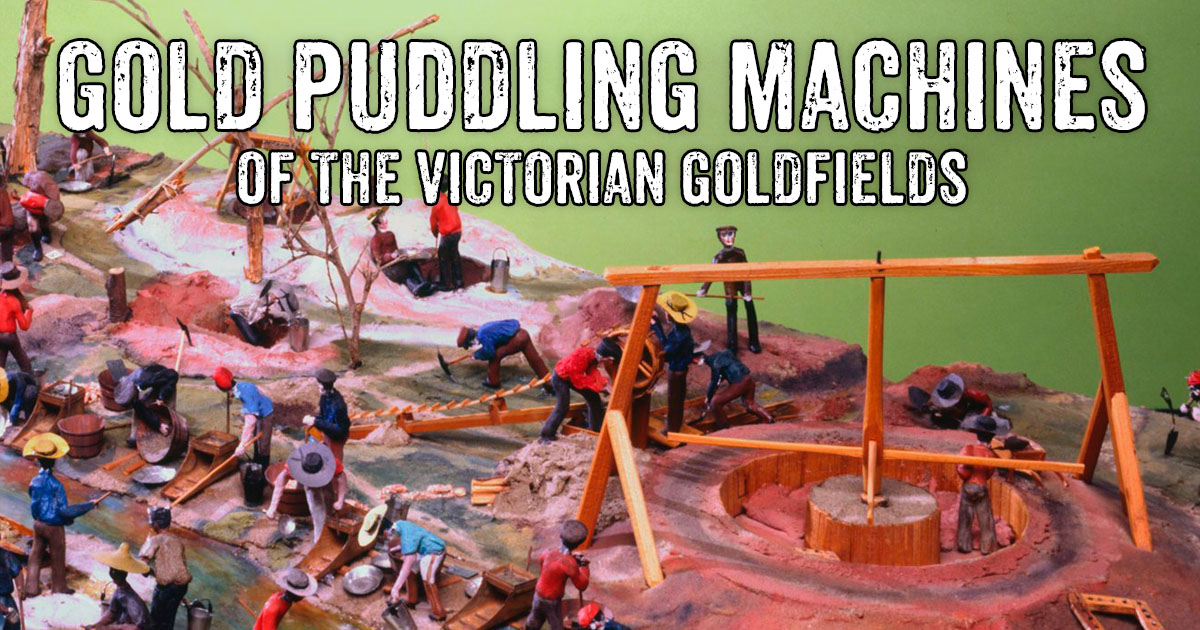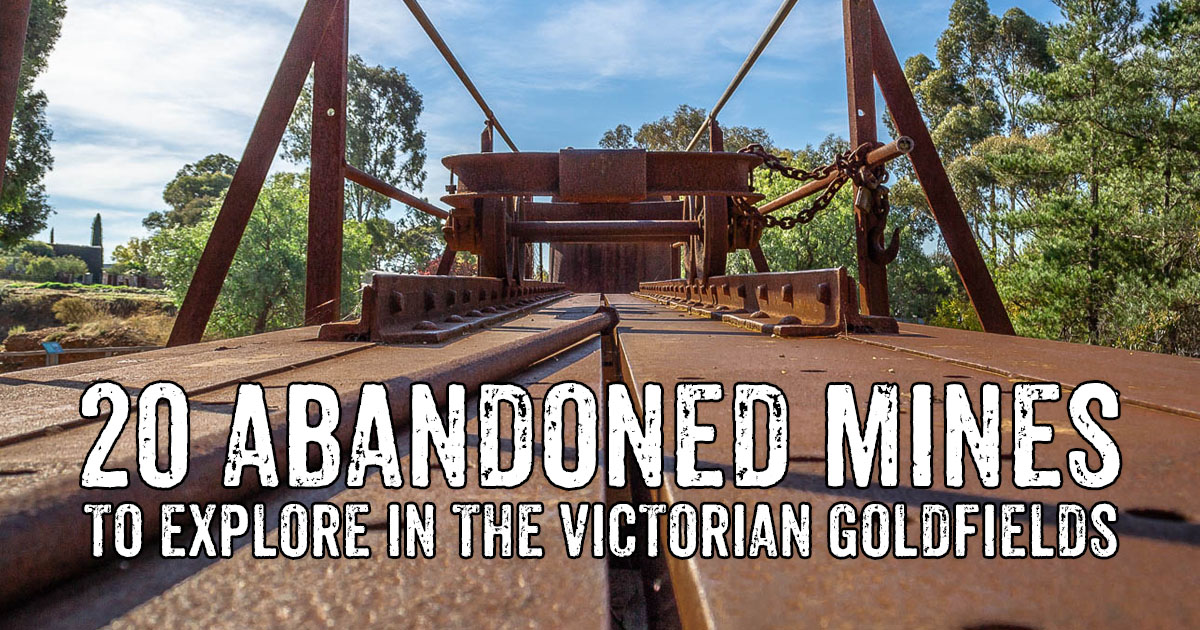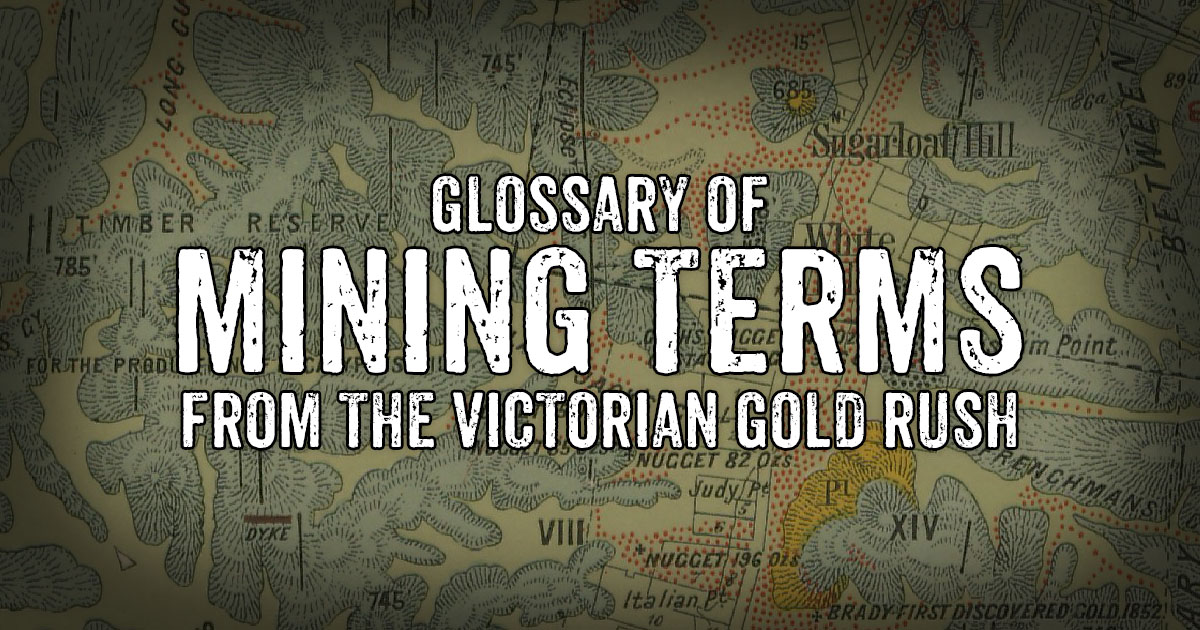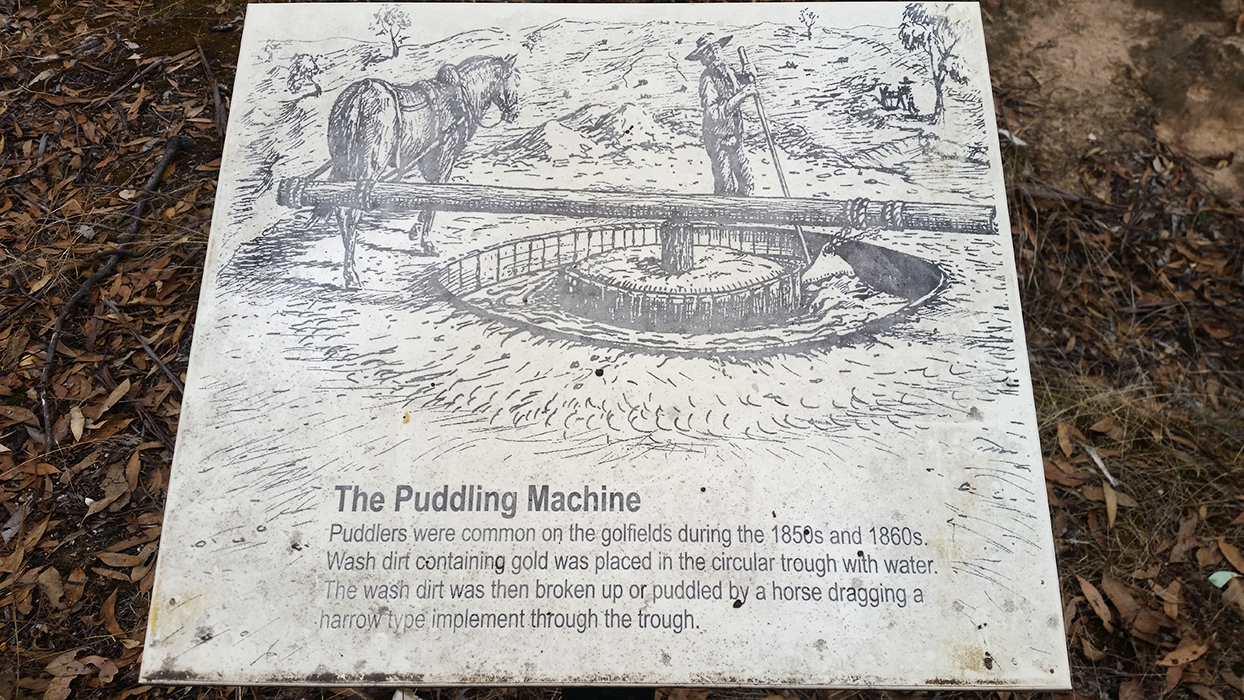This reconstructed gold puddler sits along Main Gully within the Whroo Historic Area, not far from the massive Balaclava Mine.
This puddler was originally owned by William Puckey, and was first restored by Charles Bell and later by the Rushworth Lions Club.
The puddler sits alongside a dam and is accompanied by a picnic table, small fire pit with barbecue plate, and a couple of information signs.
Free camping is available nearby at
Greens Campground.
WHAT IS A PUDDLING MACHINE?
Puddling technology was developed entirely in Victoria. The need for these machines arose due to the enormous amounts of clay soil in the region which needed to be broken up to retrieve the gold.
Puddling machines are a very significant development in the history of Victorian gold mining, as they are the only technology or method developed entirely on the Victorian Goldfields.
(source)
Information sign at the nearby Battery Dam, an old mine site turned eucalyptus distillery, regarding puddling machines.
Earth Resources offers the following concise description of a puddling machine:
Puddling machines were pioneered on the Victorian goldfields in 1854 as an affordable means of processing gold-bearing clay on a large scale.
A horse dragged a harrow repeatedly through a circular, barklined trough full of clay and water, 'puddling' the mixture into a thin sludge. Any gold freed from the lumpy clay would sink, remaining behind on the bottom of the trough after the watery sludge was drained off. A clean-up of the residue, using tin-dish or cradle, would bring the gold finally to light.
Photograph of a gold puddling machine used in Victorian gold mining.
Image source: Federation University Australia E.J. Barker Library (top floor) Mount Helen Victoria
More information and history
Information signs alongside the Whroo puddler display the following text:
Gold mining at Whroo
At the Whroo goldfields, gold was first mined from the surface deposits of gravel and silt found in shallow gullies around Whroo using portable tub and cradle equipment. A miner would rock the cradle, washing and sifting out the lighter materials until only gold was left.
Diggers to the goldfields seeing their fortune needed basic equipment to find that elusive gold. Items such as a pick, shovel and tin dish were basic tools. If a miner could afford some better equipment he could buy a cradle or build a puddling machine or own a steam powered crushing battery which consisted of stamping feet and shaking tables.
Mining companies owned stamping batteries which consisted of large stamping feet and shaking tables, that would crush the quartz, separating the gold. As well as crushing their own quartz, the companies would charge miners 1 pound sterling per ton to crush the quartz from their mines. 1863 records show that three crushers owned by Renison, Lewis and Law & Darroch operated at Whroo.
Whroo and Rushworth miners were constantly plagued by problems with water - either through shaft flooding or in summer, miners did not have enough water to drink or to was gold from alluvial diggings. Diggers at Whroo had to walk 10kms to a lagoon to wash their dirt. Water was carted 20kms from the Goulburn River and the Waranga Lagoon to Whroo.
Puddling machine

Later, puddling became the main method for working the alluvial fields and were often owned by cooperatives. Large quantities of gold bearing clay were taken from the gullies and mixed with water in the puddlers. A single horse would drag harrows around the circular trench to break up the clay and allow the heavier gold to settle to the bottom of the trench.
Today, Whroo has one of its many puddling machines restored. Originally owned by William Puckey, this horse driven puddling machine is situated near that owned by James Cooper, shown on the 1857 survey map. Over the years Charles Bell and Rushworth Lions Club have been responsible for its restoration.
1863 records indicate that there were 17 puddling machines at Whroo. The Chinese operate four puddling machines around Rushworth and eight around Whroo.
Cyanide vats
Later techniques such as cyaniding were utilised as a more efficient chemical means of extracting gold by leaching mine tailings. This technique was introduce to the gold fields later in the 19th Century. This method proved to be successful in extracting gold from tailings left from the stamping batteries.



PROSPECTORS AND MINERS ASSOCIATION VICTORIA
Established in 1980, the Prospectors and Miners Association of Victoria is a voluntary body created to protect the rights and opportunities of those who wish to prospect, fossick or mine in the State of Victoria, Australia.
You can support the PMAV in their fight to uphold these rights by
becoming a member. You'll also gain access to exclusive publications, field days, prospecting tips, discounts and competitions.



%20Mount%20Helen%20Victoria.jpg)

